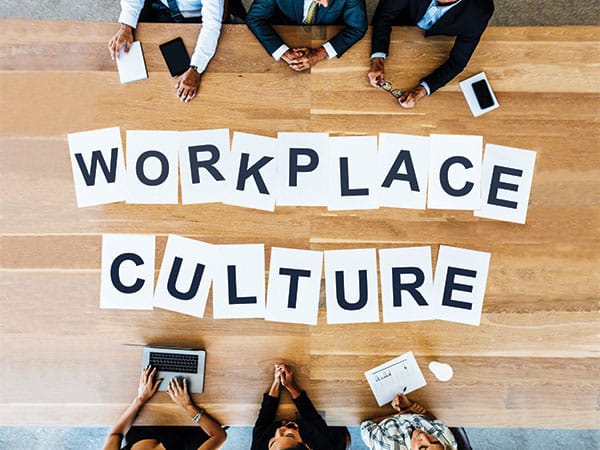In the rapidly evolving landscape of business, the importance of fostering a positive workplace culture has never been more pronounced. Companies globally are recognizing that their most valuable asset is their workforce. As competition for talent becomes fiercer and employee expectations shift, organizations are re-evaluating their approaches to workplace culture. From promoting diversity and inclusion to enhancing employee well-being, the ongoing efforts to redefine and improve workplace environments reflect a deeper understanding of human capital’s pivotal role in an organization’s success.
### Understanding Workplace Culture
Workplace culture encompasses the values, behaviors, and shared vision that contribute to the environment in which employees work. It is influenced by various factors including leadership styles, company policies, and employee interactions. A strong workplace culture can lead to greater employee satisfaction, increased productivity, and lower turnover rates. As such, organizations are increasingly investing in initiatives designed to cultivate positive cultural attributes.
### The Shift Towards Employee-Centric Cultures
Historically, many organizations operated under a top-down management style, where the emphasis was placed on hierarchy and authority. However, the contemporary work environment is shifting towards a more employee-centric model. This shift is accompanied by a greater emphasis on collaboration, transparency, and empowerment.
1. Promoting Inclusive Practices
Inclusivity has emerged as a critical component of workplace culture. Organizations are actively working to create environments where all employees feel valued, regardless of their background or identity. Initiatives such as bias training, diverse hiring practices, and employee resource groups (ERGs) are being adopted to foster inclusivity. Such practices not only promote a sense of belonging but also enhance team dynamics and innovation.
2. Enhancing Employee Well-Being
The acknowledgment of mental health’s importance has dramatically increased in recent years. Companies are implementing mental health programs, wellness initiatives, and flexible work arrangements to support their employees’ overall well-being. For example, organizations like Google and Microsoft offer meditation and mindfulness courses, while others provide access to counseling services. These efforts aim to create a healthier work-life balance, ultimately leading to a more engaged and productive workforce.
3. Encouraging Continuous Feedback and Communication
Facilitating open dialogue between employees and management is another crucial aspect of modern workplace culture. Companies are moving away from traditional annual performance reviews and adopting continuous feedback mechanisms. Tools such as employee surveys, one-on-one check-ins, and open-door policies have become common practices. These initiatives encourage employees to voice their concerns and ideas, fostering a culture of transparency and collaboration.
### Technological Integration in Enhancing Workplace Culture
Technology plays a pivotal role in shaping workplace culture. The adoption of sophisticated tools and platforms can enhance communication, collaboration, and employee engagement. Here are several ways technology is influencing workplace culture:
1. Remote Work and Digital Collaboration
The COVID-19 pandemic accelerated the shift towards remote work, prompting organizations to adopt digital tools to maintain productivity and connection among teams. Platforms like Slack, Microsoft Teams, and Zoom have enabled seamless communication and collaboration, allowing for flexible working arrangements. This shift has also highlighted the importance of creating an inclusive culture in virtual settings, ensuring that remote employees feel connected and supported.
2. Using Data to Drive Decisions
Organizations are increasingly employing data analytics to understand employee engagement and workplace culture. By analyzing employee feedback and performance metrics, companies can identify areas for improvement and develop targeted strategies to enhance the workplace experience. For example, organizations can pinpoint trends in employee satisfaction and adjust policies or programs accordingly.
3. Gamification and Engagement Tools
To foster engagement and motivation, many companies are introducing gamification into the workplace. By incorporating game-like elements into training and performance management, organizations can make processes more enjoyable and engaging. This approach not only boosts employee morale but also encourages participation in initiatives aimed at enhancing workplace culture.
### Case Studies of Successful Transformations
Numerous organizations have embarked on journeys to improve their workplace culture, demonstrating the impact of intentional efforts.
– Salesforce
Salesforce, a leading customer relationship management (CRM) platform, has established itself as a pioneer in promoting a strong workplace culture. The company emphasizes equality, well-being, and community engagement. Salesforce’s initiatives include comprehensive employee training on diversity and inclusion and a commitment to equal pay. The organization has reported higher employee satisfaction and retention rates as a result of these efforts.
– Unilever
Unilever, a multinational consumer goods company, has embraced the concept of sustainable living and social responsibility as part of its workplace culture. The company encourages employee participation in community service and environmental sustainability initiatives. By integrating purpose-driven practices into its culture, Unilever has seen increased employee engagement and a positive corporate reputation.
– Airbnb
Airbnb’s workplace culture is rooted in inclusivity and collaboration. The company promotes a flat organizational structure where employees at all levels are encouraged to contribute ideas. Airbnb’s culture emphasizes the importance of belonging, with initiatives such as employee resource groups and mentorship programs. As a result, the organization has fostered a sense of community and shared purpose among its workforce.
### Challenges and Considerations
While many organizations strive to enhance their workplace culture, challenges remain. Resistance to change, lack of resources, and ineffective communication strategies can hinder progress. Furthermore, the rapid pace of technological advancements requires organizations to remain adaptive and responsive to emerging trends.
#### Resistance to Change
Altering workplace culture often meets with resistance from employees who may feel comfortable with existing practices. To navigate this challenge, leaders should maintain open lines of communication, providing clarity on the reasons behind the proposed changes and how they will benefit the organization as a whole.
#### Resource Allocation
Implementing cultural initiatives requires time, effort, and financial resources. Organizations should allocate sufficient budgetary provisions to support training programs, employee engagement activities, and well-being initiatives. Leaders must demonstrate commitment to these efforts, underscoring their significance.
#### Effective Communication Strategies
To ensure the success of workplace culture initiatives, organizations must foster robust communication networks. Leaders should actively seek feedback from employees and involve them in the decision-making process. By creating channels for open dialogue, companies can cultivate trust and engagement.
### The Future of Workplace Culture
As organizations continue to evolve, the future of workplace culture will undoubtedly hinge on flexibility and adaptability. Emerging trends highlight the importance of hybrid work environments, where employees can seamlessly transition between in-office and remote work. Additionally, as workplace demographics shift, organizations will need to prioritize intergenerational collaboration and create inclusive policies that cater to diverse needs.
### Conclusion
The great work of enhancing workplace culture is ongoing, with organizations across various industries embracing innovative strategies to foster positive environments. By prioritizing inclusivity, employee well-being, and effective communication, companies can create cultures that not only attract and retain top talent but also contribute to sustained organizational success. As businesses navigate the complexities of the modern workforce, the continued commitment to cultivating a strong workplace culture will be paramount.



